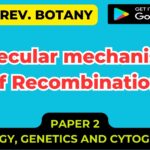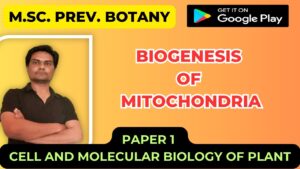![]()
Genetic Transduction in Bacteria
Transduction:
- This process of genetic recombination was discovered by Zinder and Lederberg (1952) in Salmonella typhimurium during their experiments with the objective of discovering whether E. coli type of genetic exchange also existed in S. typhimurium.
- In contrast to transformation, wherein free (naked) DNA is transferred, fragments of DNA are transferred from one bacterial cell to the other with the help of a viral carrier (bacteriophage) during transduction i.e., the transduction is a phage-mediated process of genetic material transfer in bacteria.
- The bacteriophage acquires a portion of the bacterial DNA of the host cell in which it reproduces and then transfers this acquired DNA to another bacterial cell to which it infects. Such bacteriophage is called ‘transducingphage’. Transduction is of the following two types: generalized (non- specialised) and specialized (restricted).
1. Generalized Transduction:
- Transduction, which results in transfer of any bacterial gene from one bacterial cell to the other is referred to as generalized or non-specialized transduction.
- It is mediated by some virulent phages and certain temperate phages; E. coli phage P1, Salmonella phage P22, and Bacillus subtilis phages PBS1 and SP10 are such phages.
- In generalized transduction , some of the developing progeny phages, during their normal lytic- cycle may accidentally acquire pieces of bacterial DNA. Such phages, after the lysis of the host bacterial cell and their release, attach to and inject their DNA into a new recipient cell but fail to re-establish lytic-cycle therein.
- Once inside the recipient bacterial cell, the injected DNA may be degraded by nucleases, in which case genetic exchange does not occur.
- The injected DNA, however, may undergo integration resulting in homologous recombination, as a result, the transduced cell may possess new combination of genes.
- The transduced bacterial cell now undergoes usual binary fission and produces progeny cells containing new combination of genes.

2. Specialized Transduction:
- In contrast to generalized (non-restricted) transduction, which results in transfer of any gene from donor to recipient bacterial cell, specialized (restricted) transduction is that which leads to the transfer of only specific (restricted) genes from donor to recipient cell.
- Specialized transduction is mediated by those temperate bacteriophages (e.g., lambda (λ) phage, mu (μ) phage and ɸ80 phage) that usually incorporate (integrate) their DNA into the bacterial chromosome.
- The phage-DNA is called ‘prophage’ in its integrated state with the bacterial chromosome; the bacterium having a prophage is said to be lysogenic, and this phage-host-relationship is called lysogeny.

- Lysogenic temperate phages spontaneously switch over from lysogenic to lytic state at a low rate (about one in 195 cell divisions) in nature, or they may be induced to do so by irradiation with ultraviolet light.
- During this transition, the prophage is usually excised precisely from the specific site of integration in its exactly original form.
- But occasionally, it may excise imprecisely so that it takes with it that specific portion of bacterial chromosome which lies close to the site of prophage insertion and leaves a portion of its own DNA remaining integrated within the bacterial chromosome.
- Such prophage is called ‘specialized transducing principle’ and is packaged into a developing phage particle inside the host bacterial cell.
- Phage particle so developed is called ‘specialized transducing phage’ and is released after the host bacterial cell undergoes lysis.
- Only those specialized transducing phages are viable that contain an amount of greater than 73% and less than 110% of the phage-DNA.
- When a viable specialized-transducing-phage infects a new bacterial cell, its specialized-transducing principle that already contains specific portion of bacterial chromosome inserts into the recipient bacterial chromosome thus making the latter diploid for that specific bacterial gene (partial diploid or heterogenote or merogenote).
- Since the specialized transducing phage is ‘defective’ phage as it has lost some genes during the excision, it functions in recipient bacterial cell only when the latter is already infected by another phage (termed as helper phage) that contains the missing genes and thereby complements the lost phage-functions of the specialized transducing-phage.
- The partial diploid contains two copies of the concerned genes, one from donor bacterium and other from recipient bacterium, and is unstable.
- As a result, bacterial cells containing gene of donor bacterium and those containing gene of recipient bacterium segregate at a frequency of about one in 1,000 cell divisions.
- For example, lambda (λ) phage integrates between the gal genes (required for the utilization for galactose as an energy source) and the bio genes (essential for the synthesis of biotin amino acid) in the E. coli chromosome.
- It transduces, therefore, only gal or bio genes thus making the recipient bacterial chromosome diploid for either gal or bio genes.
- Similarly, phage ɸ80 integrates near the trp genes (required for the synthesis of tryptophan amino acid) and transduces them.














